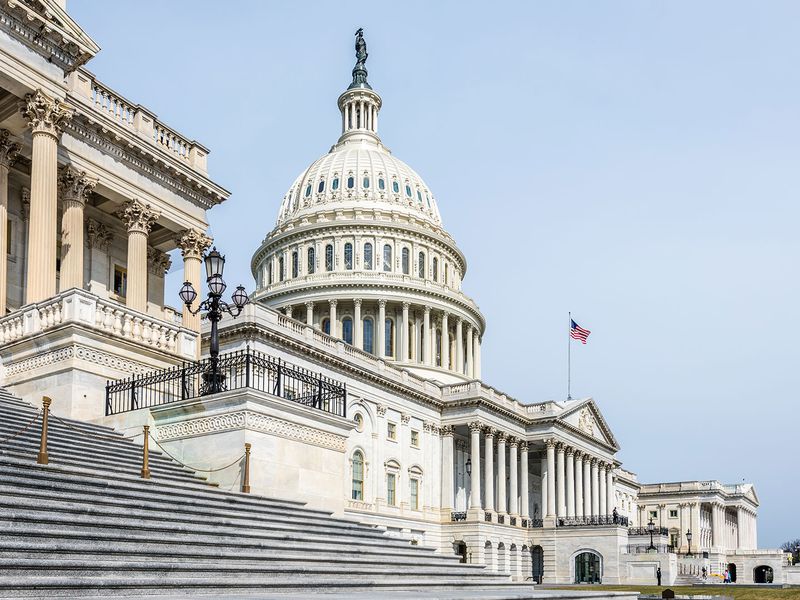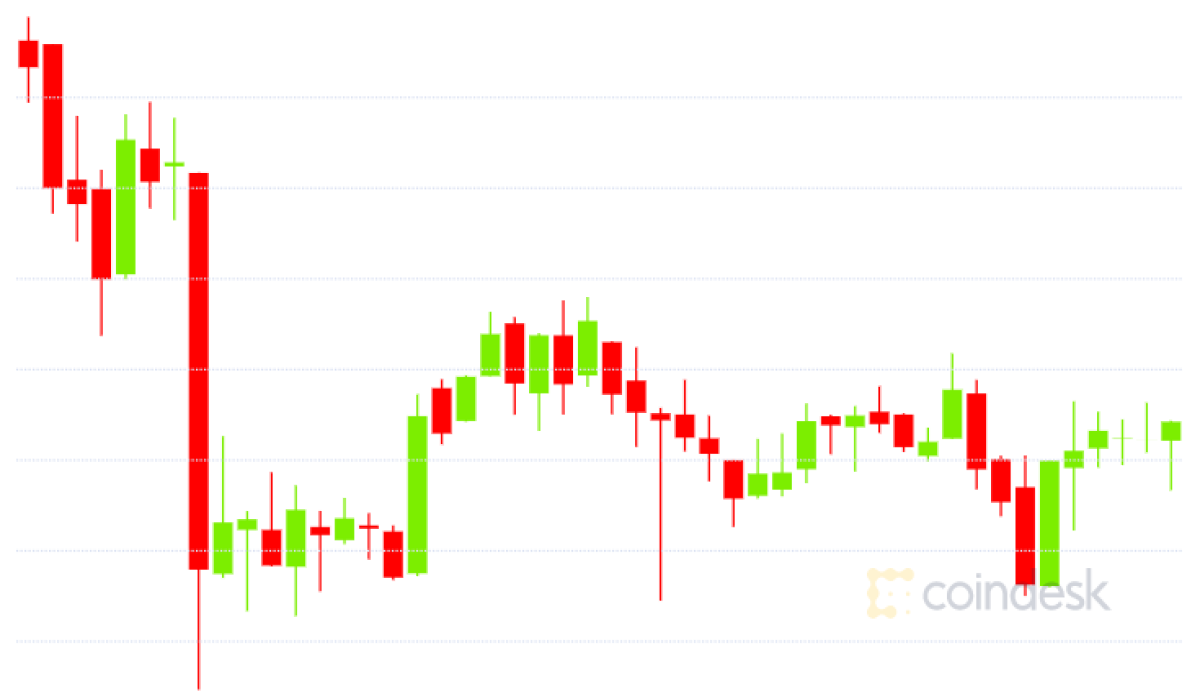Crypto Innovation and Regulation Should Be Partners, Not Adversaries
:format(jpg)/www.coindesk.com/resizer/CabGUKozR1NyiBkjN56PYzuQ3RQ=/arc-photo-coindesk/arc2-prod/public/R5JVYM4XOFBPRLGHVGCYQXUAQM.png)
Glenn C Williams Jr, CMT is a Crypto Markets Analyst with an initial background in traditional finance. His experience includes research and analysis of individual cryptocurrencies, defi protocols, and crypto-based funds.
He owns BTC, ETH, UNI, DOT, MATIC, and AVAX
:format(jpg)/s3.amazonaws.com/arc-authors/coindesk/316ac93f-4b4a-4379-be0d-fc94b27772c2.png)
Nick Baker is CoinDesk’s deputy editor-in-chief. He owns small amounts of BTC and ETH.
“There’s no reason why innovation and regulation have to be mutually exclusive.”
Out of the myriad thought-provoking statements made at this year’s Consensus 2023 conference, this is the one that stands out the most to me. Uttered by Chris Zuehlke, the global head of crypto market maker Cumberland DRW, the comment brings together two important aspects of the economy.
The first (innovation) represents that which has yet to be discovered, the potential for efficiencies, revenue, growth, etc. The second (regulation) can help innovation flourish in a legal and orderly way – or regulation can hinder innovation completely.
Their coexistence is necessary, but when their relationship is contentious, it’s highly problematic for all. Recent developments have me worried. Let me explain.
You’re reading Crypto Long & Short, our weekly newsletter featuring insights, news and analysis for the professional investor. Sign up here to get it in your inbox every Wednesday.
Blockchain developers design, build and maintain applications within crypto ecosystems. They, as developers, make a conscious effort to allocate their time, intellect, talent and resources to build things that they feel have utility.
Developers flocking to or retreating from a particular ecosystem arguably serves as an indication of the protocol’s efficacy. Developer activity can also serve as an early indication of which crypto-focused projects are poised for growth and are generating value for users.
An analogy from the physical world is apt: Often, the most vibrant cities are the ones with the most construction. The same philosophy holds true in blockchain development. If developers are building there, a protocol may be worth exploring.
Recently, I came across a report that showed two developments, one of which was encouraging, the other not so much.
First, blockchain development is expanding. The report showed there are approximately 21,700 monthly active developers across the various crypto ecosystems. The top five by rank are:
-
Ethereum: 1,975
-
Polkadot: 675
-
Cosmos: 530
-
Solana: 344
-
Bitcoin: 328
The overall number has grown 43% in the past two years and 110% over the last three – though it is down 17% since November, when the FTX exchange’s collapse caused so much industry turmoil.
The long-term increase even as we navigate a crypto winter is testament to the fact that crypto represents an expansion in technology and innovation. Cryptocurrencies are not simply coins and tokens that exist only for the purpose of speculation. They also represent technologies where potentially valuable applications are being developed.
More developers have been attempting to build things of value on various ecosystems, which should benefit the general public. This is positive.
The second development has me concerned, however. While the overall number of developers has gone up, their ranks are dwindling in the U.S. The proportion of developers based in the U.S. has dropped to 29% from 40% in 2017.
The U.S. is now tied with Europe, which is also at 29% after remaining relatively stable in recent years. But Asia and Africa are rising fast, so it’s reasonable to think the U.S. will be knocked from the top position.
What explains the American decline? The recent tone between the crypto space and U.S. policymakers has become unnecessarily strident. And, as such, individuals within crypto have concerns about a lack of clarity and whether actions they take in the name of innovation will run afoul of yet-to-be revealed or implemented regulations.
The lowest hanging (but still viable) fruit to grab in this regard is Securities and Exchange Commission Chair Gary Gensler’s comments on cryptocurrencies and what appears to be (at least on the surface) a hostile attitude towards the sector.
Much of it has been attributed to perceived contradictions between what Gensler is saying now as head of the SEC, and what he has said in the past, with statements made in 2018 that appear to completely contradict what he is currently stating.
Here’s the thing: Positions evolve. It’s possible for someone to change their mind on an issue. But if done without clarity, it’s easy for a situation to evolve where people simply don’t believe what you’re saying, or believe the motivation for change was driven by external factors.
This is not simply limited to developers. Crypto firms have begun to consider overseas operations, with Coinbase reportedly considering moving a segment of its operations outside of the U.S. The primary motivation of a move is apparently the diversification of regulatory risk.
With Europe recently approving its Markets in Crypto Assets (MiCA) regulation, it seems more likely U.S. individuals and firms will seek out countries with greater regulatory clarity.
What we need is, believe it or not, for everyone to move toward sensible regulation and not regurgitation of party-centric talking points, on both sides of the political spectrum.
An example of a path forward is illustrated in a recent draft of a U.S. stablecoin bill, which is reportedly receiving bipartisan support. Elements of the bill include ensuring the maintenance of adequate liquid reserves, a moratorium on algorithmic stablecoins and licensing rules for stablecoin issuers.
But the most important part is that the two major political parties are apparently working together.
If they can’t do that more often, crypto innovation will absolutely move elsewhere.
From CoinDesk Deputy Editor-in-Chief Nick Baker, here’s some news worth reading:
-
THE OPTIMISM: I was a newbie at CoinDesk’s Consensus 2023 conference held last week, and I was blown away by how big and impressive the event was. The high level of optimism was a surprise given just how bad the regulatory outlook is. I know that’s partly self-selection bias at work: People who pay a lot of money to attend such an event tend to be bullish. Still, the juxtaposition of big questions about crypto’s future and optimistic outlooks was striking to me.
-
MILLIONAIRE FROGS: There’s another way to say people are optimistic about crypto: The market cap of the PEPE meme coin has surged to half a billion dollars following a 2,100% surge since its April debut. BitMEX is offering derivatives contracts tied to PEPE with enormous leverage. Caveat emptor abounds here, of course. With no apparent there there, just degens and day traders moving the price up and down, this sure seems like the kind of speculative fervor that usually ends in tears – though dogecoin (DOGE), probably the most famous meme coin, is still around after so many years, so who knows.
-
CRYPTO LEGISLATION: One of the more ear-catching announcements at Consensus was U.S. Rep. Patrick McHenry saying a key congressional committee will have a proposal for crypto legislation in the near future. It’s hard to be – sorry to overuse the word – optimistic about this, though. We’ve been down this road before, hoping the U.S. will bring some legislative clarity to the industry with not much to show for it. In the runup to the 2024 presidential election it’s hard to imagine much bipartisan work getting done.
-
KILLER APP: Traditional financial (TradFi) firms have talked about and experimented with blockchains and crypto for many years, but the hoped-for intersection of those two distinct realms really hasn’t happened. In the view of JPMorgan, though, the movement toward tokenizing real-world assets is a “killer app” for TradFi, and the bank is pressing forward into that realm, “largely undeterred by the crypto bear market and regulatory uncertainty,” CoinDesk’s Ian Allison reports.
To hear more analysis, click here for CoinDesk’s “Markets Daily Crypto Roundup” podcast.
Edited by Nick Baker.
Learn more about Consensus 2023, CoinDesk’s longest-running and most influential event that brings together all sides of crypto, blockchain and Web3. Head to consensus.coindesk.com to register and buy your pass now.
DISCLOSURE
Please note that our
privacy policy,
terms of use,
cookies,
and
do not sell my personal information
has been updated
.
The leader in news and information on cryptocurrency, digital assets and the future of money, CoinDesk is a media outlet that strives for the highest journalistic standards and abides by a
strict set of editorial policies.
CoinDesk is an independent operating subsidiary of
Digital Currency Group,
which invests in
cryptocurrencies
and blockchain
startups.
As part of their compensation, certain CoinDesk employees, including editorial employees, may receive exposure to DCG equity in the form of
stock appreciation rights,
which vest over a multi-year period. CoinDesk journalists are not allowed to purchase stock outright in DCG
.
:format(jpg)/www.coindesk.com/resizer/CabGUKozR1NyiBkjN56PYzuQ3RQ=/arc-photo-coindesk/arc2-prod/public/R5JVYM4XOFBPRLGHVGCYQXUAQM.png)
Glenn C Williams Jr, CMT is a Crypto Markets Analyst with an initial background in traditional finance. His experience includes research and analysis of individual cryptocurrencies, defi protocols, and crypto-based funds.
He owns BTC, ETH, UNI, DOT, MATIC, and AVAX
:format(jpg)/s3.amazonaws.com/arc-authors/coindesk/316ac93f-4b4a-4379-be0d-fc94b27772c2.png)
Nick Baker is CoinDesk’s deputy editor-in-chief. He owns small amounts of BTC and ETH.









